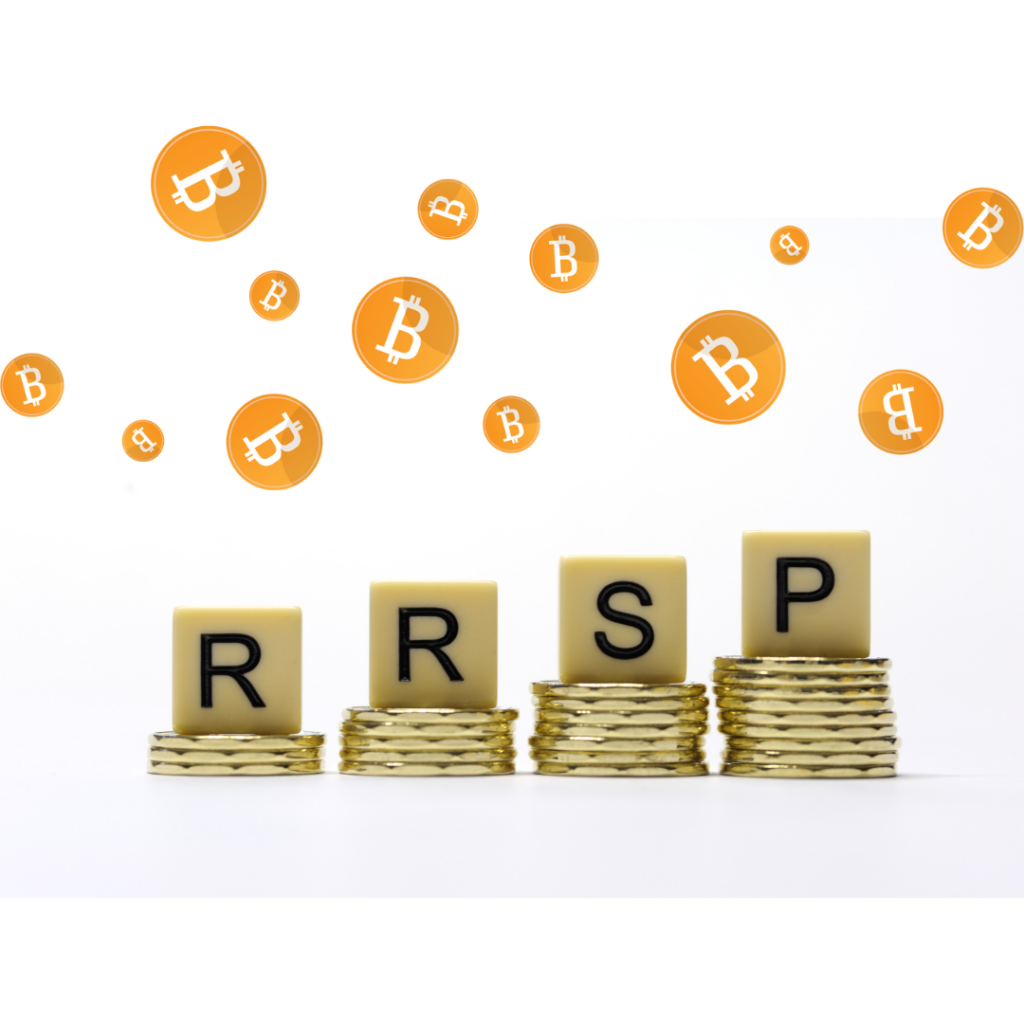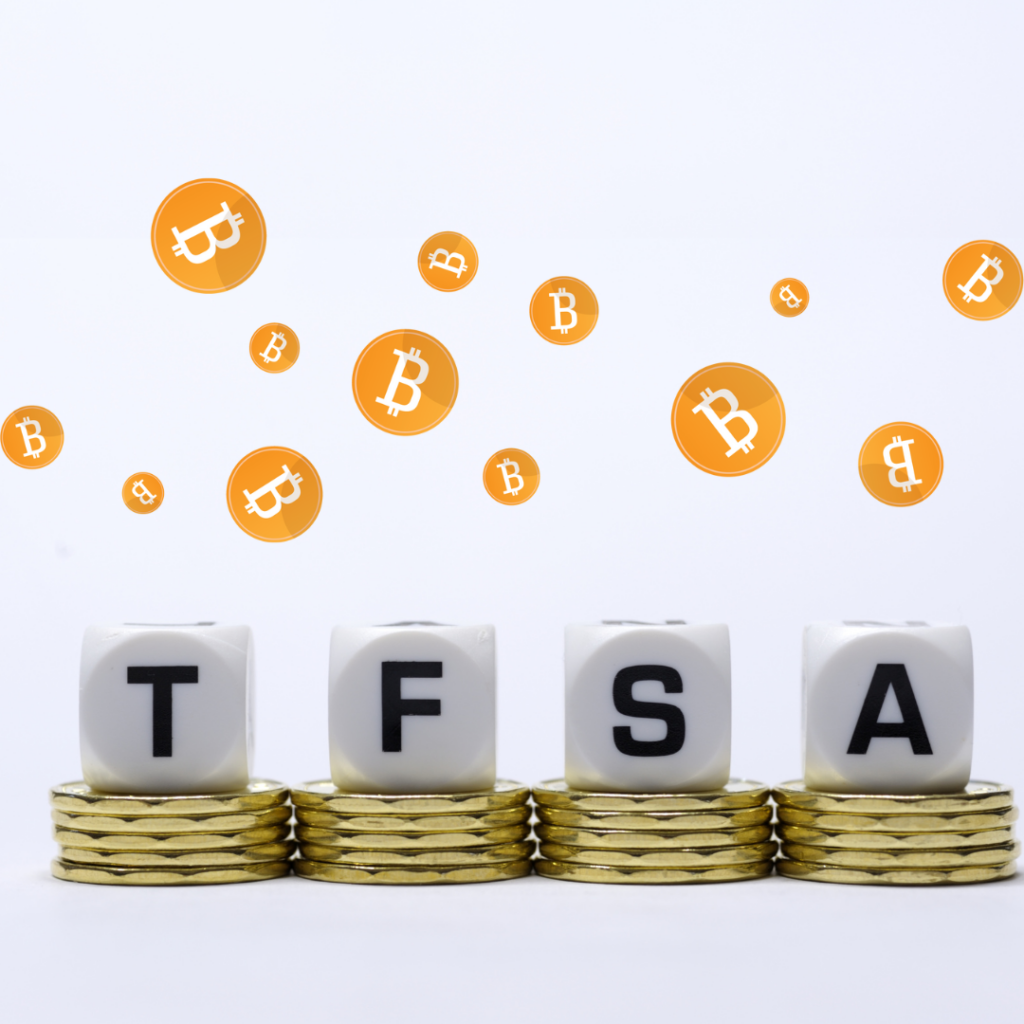Holding Crypto in RRSP or TFSA: Crypto Tax Hack for Canadians
Holding crypto in RRSP or TFSA is not possible, but you can still invest indirectly through Bitcoin ETFs. These funds track the price movements of Bitcoins held by the ETF provider, making it a familiar and accessible method for investors to profit from cryptocurrencies. The only drawback is that you won’t actually own the cryptocurrency.
There are plenty of crypto tax-saving strategies, but few are as effective as holding your investments in a Registered Retirement Savings Plan (RRSP) or Tax-Free Savings Account (TFSA). Not only do these tax-sheltered accounts offer significant tax benefits, but they also allow you to save for your long-term financial goals.
But there are limitations.
For starters, you can’t hold crypto in an RRSP or TFSA. Bummer? Don’t worry. There is a way around it.
In this article, we will discuss what RRSPs and TFSAs are, their tax benefits and a workaround for investing in crypto without holding any and help you decide whether this strategy is right for your investment goals.
What is RRSP and TFSA?
Before we explain how you can hold crypto in RRSP and TFSA, let’s quickly go over the basics. While both these tax shelters offered by the Canadian government allow for tax-advantaged investment and savings, there are some key distinctions to be aware of.
What is an RRSP?

An RRSP, short for Registered Retirement Savings Plan, is a government-sponsored investment account designed to help Canadians save for retirement. It allows you to invest in a wide range of options, including mutual funds, ETFs, stocks and bonds. We will talk about holding crypto in your RRSP soon.
Tax-Benefits on RRSP
One of the biggest advantages of holding crypto assets in a Registered Retirement Savings Plan (RRSP) is its tax benefits. The Canadian government allows you to contribute up to 18% of your previous year’s income, or $29,210 for the tax year 2022, to your RRSP, which is also tax-deductible.
But that’s not all!
The contributions you make to your RRSP will grow tax-free, meaning all your investment gains, dividends, or interest earned on your RRSP investments will be tax-deferred until the time of withdrawal.
The type of RRSP you have and other factors, such as your age, the value of your RRSP, and the involvement of a spouse or common-law partner, will determine whether you receive your RRSP income in full or in portions every year.
Either way, you will be taxed at your marginal income tax rate (which may be lower when you retire) on your RRSP income.
Setting up a RRSP
Setting up a registered retirement savings plan is pretty straightforward.
The first step is to choose an RRSP issuer, such as a bank, insurance company, trust firm or credit union, based on the type of plans and investments you’re looking for.
Next, decide whether you want to be the sole contributor to your RRSP or involve your spouse or common-law partner. This can be especially helpful if there’s a large difference in income between the two contributors, as it allows you to split contributions and maximize tax benefits for both parties.
Finally, you can opt for a self-directed RRSP, which allows you to manage your own investment portfolio for greater flexibility.
What is a TFSA

Similar to an RRSP, a TFSA, short for Tax-Free Savings Account, is a Canadian government-sponsored tax shelter that allows you to invest in a variety of financial products like mutual funds, ETFs, stocks, and bonds. However, unlike RRSP, the scope of a TFSA is much wider than just retirement savings.
With a TFSA, you can save for anything you want – whether it’s a dream wedding, a well-deserved vacation, a down payment on a house, or even just as an emergency fund.
Tax Benefits of TFSA
While contributions to a TFSA are not tax-deductible, the growth of your investments within the account is tax-free, just like an RRSP. The best part is you pay no taxes at the time of withdrawing your funds.
The only downside of a TFSA is that its contribution limit is lower than that of an RRSP, with a cap of $6,500 for 2023. However, your contribution room will readjust based on inflation and other factors every year. And if you don’t use all your contribution room in a given year, you can carry it over to future years.
Setting up a TFSA
Setting up a TFSA follows the same process as setting up an RRSP:
Choose an issuer based on your desired plans and investments, and decide on the type of TFSA you want to set up – a deposit, an annuity contract or an arrangement in trust.
Can you Hold Crypto in your RRSP or TFSA?
No. The Canadian government doesn’t yet allow you to directly contribute digital assets, like cryptocurrencies and NFTs, into your RRSP and TFSA. However, there are a couple of sneaky methods you can use to work around this limitation.
Holding Crypto in RRSP or TFSA through Bitcoin ETFs
As mentioned before, among the investment options that these tax-sheltered accounts allow you to invest in are ETFs. So, while you can’t directly hold crypto in RRSP and TFSA, you can still indirectly participate in the crypto market through Bitcoin ETFs.
ETFs, or Exchange Traded Funds, are investment funds that track the price movements of a specific asset or a group of assets. In the case of Bitcoin ETFs, the funds are designed to track the price of Bitcoins held by the ETF provider.
Bitcoin ETFs are a relatively new development in the world of investment. In fact, it wasn’t until February 2021 that the first public ETF backed by physically settled Bitcoins was launched by Purpose Investments in Canada. It’s called Purpose Bitcoin ETF. Shortly after, the company introduced its first Spot Ethereum ETF in April, the Purpose Ether ETF.
Dozens of new crypto ETFs have launched since then.
To get started, simply open a TFSA or RRSP account with your preferred Canadian brokerage firm and buy shares of Purpose Bitcoin (BTCC.TO) or your preferred crypto ETF.
Pros
- Bitcoin ETFs make crypto more accessible to the masses, as it allows them to use a trusted and familiar method to profit from cryptocurrencies.
- It allows investors a way to diversify their TFSA and RRSP accounts with cryptocurrency (indirectly).
- Crypto ETFs are a great middle-ground for those interested in crypto but hesitant to hold it.
- ETFs are easier and more convenient as investors don’t have to deal with setting up exchange accounts and crypto wallets, storing private keys and learning the nitty-gritty of blockchain technology.
Cons
- Although we previously mentioned not owning cryptocurrency as a benefit, it also is the biggest drawback of holding crypto in RRSP and TFSA through Bitcoin ETFs.
Holding Crypto in RRSP or TFSA through Stocks
Investing in crypto through Bitcoin ETFs is not the only way to add crypto to your retirement portfolio. An alternative is to invest in stocks of companies directly involved in the crypto industry.
This may include crypto exchanges, such as Binance and Coinbase, mining farms, like Hut 8 Mining Stock, or companies utilizing blockchain technology, such as Horizon Blockchain Games and CoinLaunch. The success of these companies heavily relies on the overall growth and adoption of crypto. Therefore, you can indirectly expose yourself to the crypto market by investing in them.
Another alternative is to invest in Bitcoin Futures ETFs. Instead of tracking the price of actual Bitcoins, Bitcoin Futures ETF tracks the price of Bitcoin futures contracts. In the US, Bitcoin Futures ETF is the only way investors can get exposure to the crypto market through ETFs.
The process of buying and holding stocks of “crypto” companies or Bitcoin Futures ETF in your RRSP or TFSA is the same as Bitcoin ETFs.
The pros and cons are also similar, except stocks of crypto companies are an even more impure version of holding actual cryptocurrency. So, if that concerns you, you may want to stick with Bitcoin ETFs.
Should you Hold Crypto in RRSP or TFSA?
RRSPs and TFSAs are long-term investment strategies that can help you save for retirement or other future financial goals. So, before you start mixing up crypto with your retirement funds and blindly throw them into a pot, consider this –
If you’re only planning to invest in crypto for the short-term, say the next 5-10 years, and you’re not taking it seriously as a retirement investment, then RRSPs and TFSAs might not be your best option. The TFSAs may still be a possibility since they have no hard and fast rule on when you can withdraw your money, but RRSPs are specifically designed to help you save for your retirement.
Either way, prematurely withdrawing funds will prevent you from maximizing the actual benefits of these tax-sheltered accounts.
That said, if you do believe crypto to be a good addition to your long-term investment plans, you must factor in the inherent volatility of the crypto market. The sudden peaks and dips of crypto can put your long-term investment plan in jeopardy.
Remember the crypto winter last year? It’s a good example of how quickly things can go wrong in the crypto space.
Moreover, consider the risks associated with crypto, such as cyber crimes and theft, and its regulatory ambiguity in different countries, which is always in flux.
In conclusion, make sure you weigh the pros and cons of holding crypto in RRSP or TFSA and whether the potential tax savings are worth the risks.